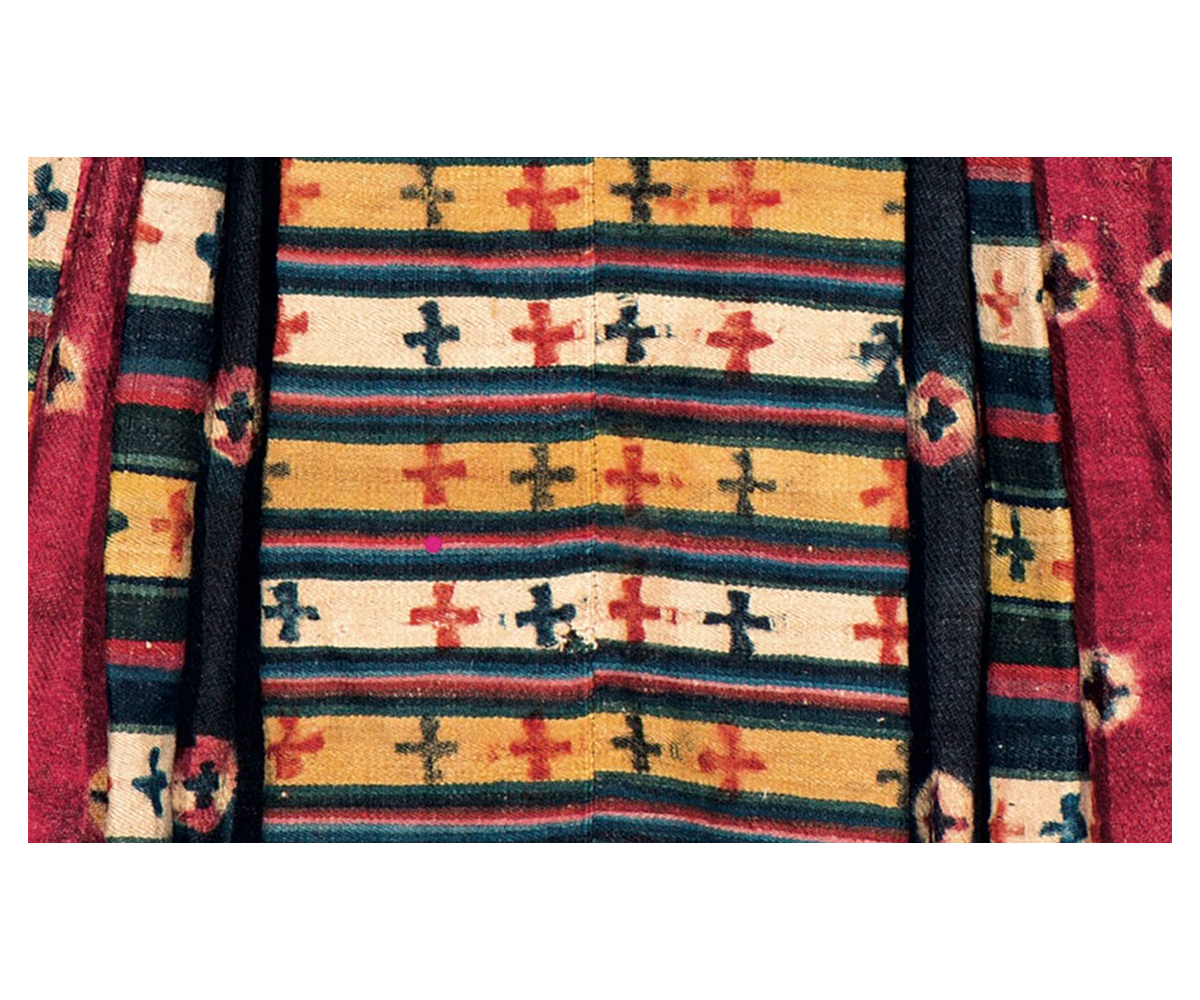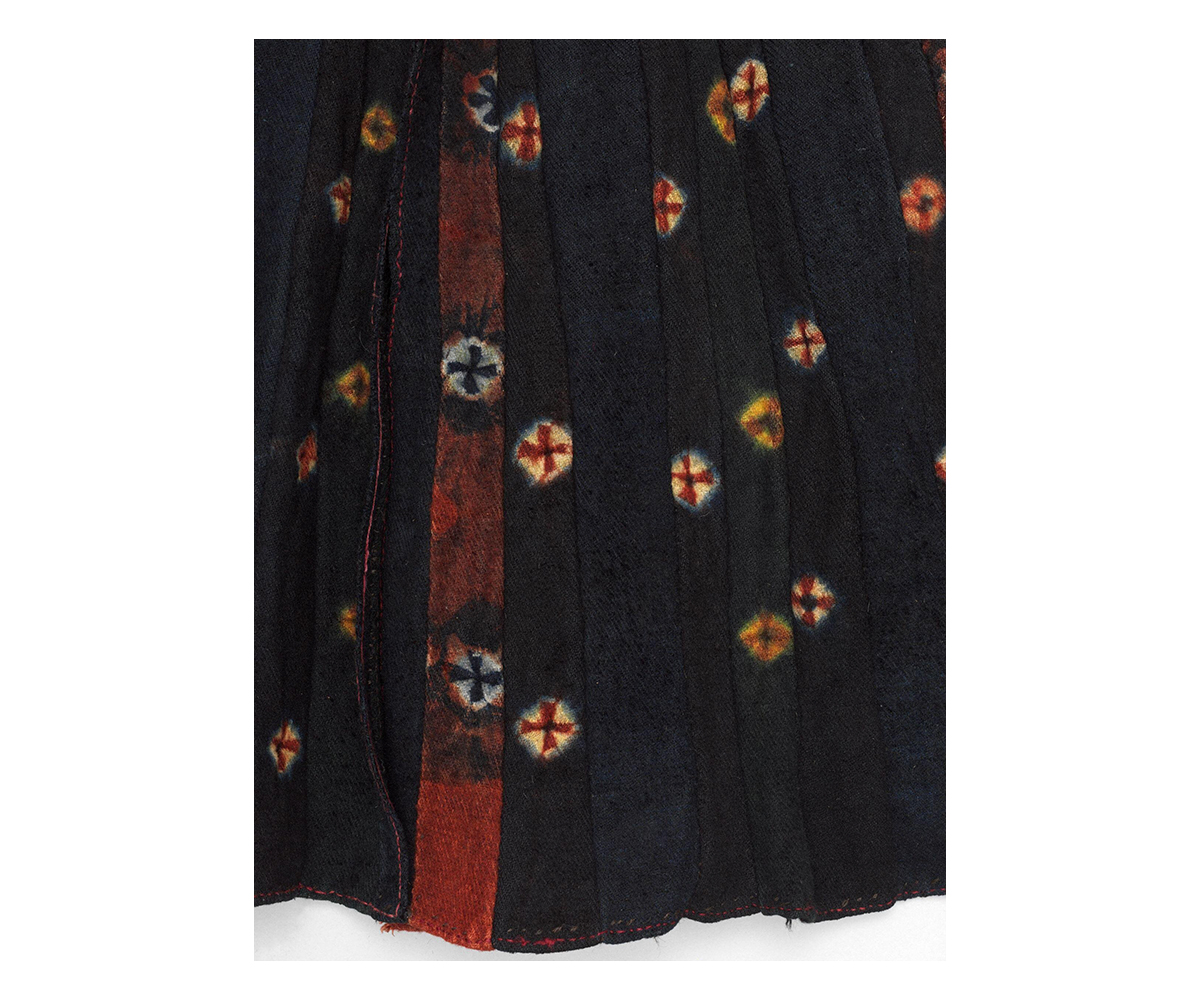ARTICLE
Thigma
A form of tie-resist-dyeing, thigma is practised primarily in the Nubra Valley and Saboo region of Ladakh in northern India. The word thigma (also spelled as thigme, thikma or thikme) derives from the local word thitoo, which means “dot.” The thigma technique is used to resist-dye panels of wool, which are then incorporated into local costumes and footwear, such as thigma paabu boots and skerekhs or woollen belts. Larger panels of thigma-patterned nambu – the main woollen textile of the region, woven from sheep or lamb wool – are used to make the sul-ma, a long-sleeved, full-length outer robe worn by women.
Thigma typically involves resist-dyeing strips of woollen cloth. Sections of the cloth are pinched, tightly bound with thread or cord, and then dyed. Natural sources are used to extract different dyes and colours – apple bark and onion peels for light browns, soot for shades of grey, and roots locally known as chutza and chzot for yellow and pink respectively. Once the cloth is dyed in the desired colours, it is washed and rinsed with water. The ties are then opened to reveal the circular patterns created by the pinched folds.
There is little record of the historical origins of thigma, but the distinct patterns of the technique can be found in paintings at the Sumstek Temple – a part of the monastic complex of Alchi, which dates to the twelfth and thirteenth centuries. The presence of thigma motifs at Alchi suggests that the technique has been long-established in the region.
Today, the thigma technique can also be found in the work of contemporary Ladakhi designers, such as Stanzin Palmo, Padma Yangchen and Jigmet Diskit.
Bibliography
Our website is currently undergoing maintenance and re-design, due to which we have had to take down some of our bibliographies. While these will be re-published shortly, you can request references for specific articles by writing to hellomapacademy@map-india.org.










